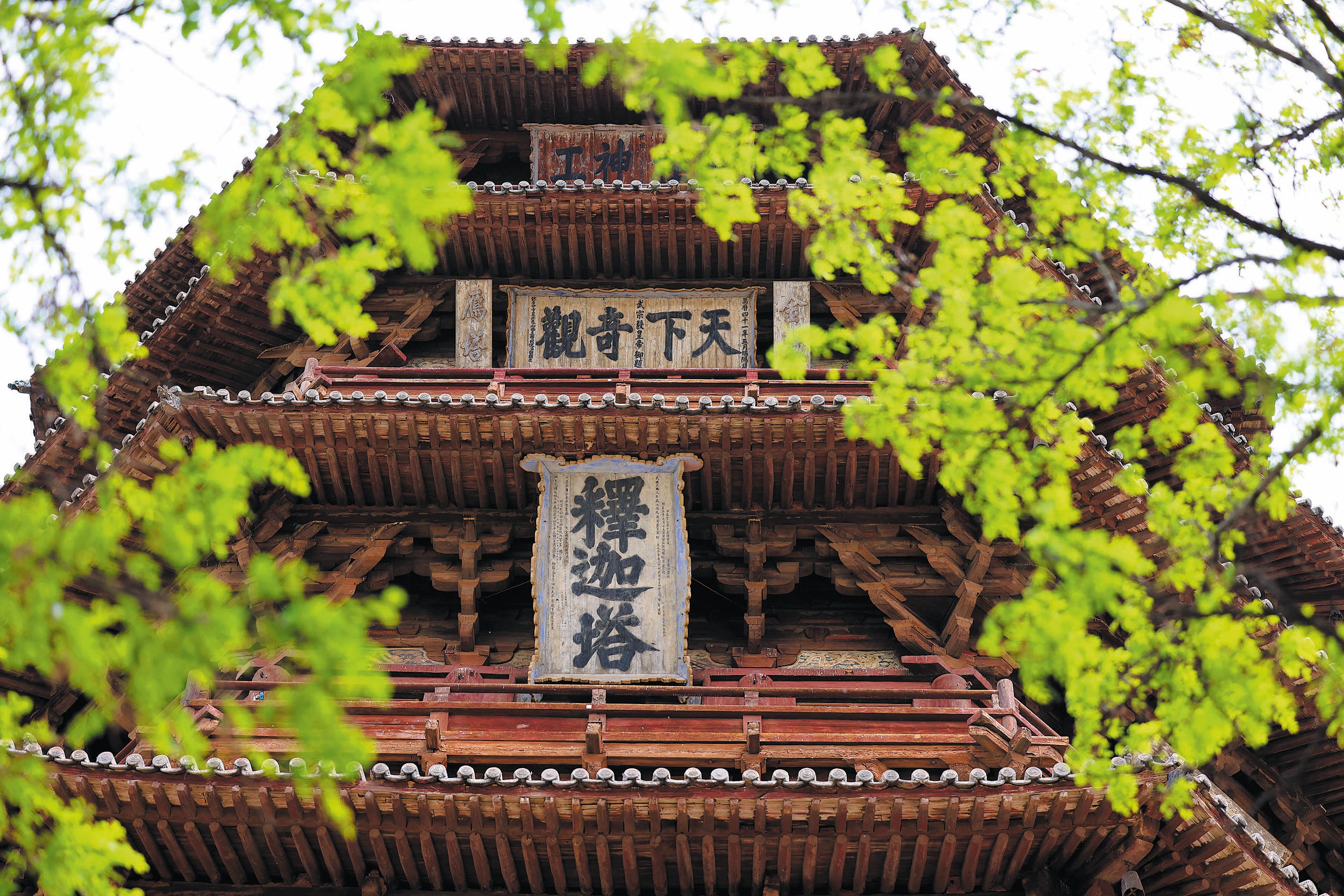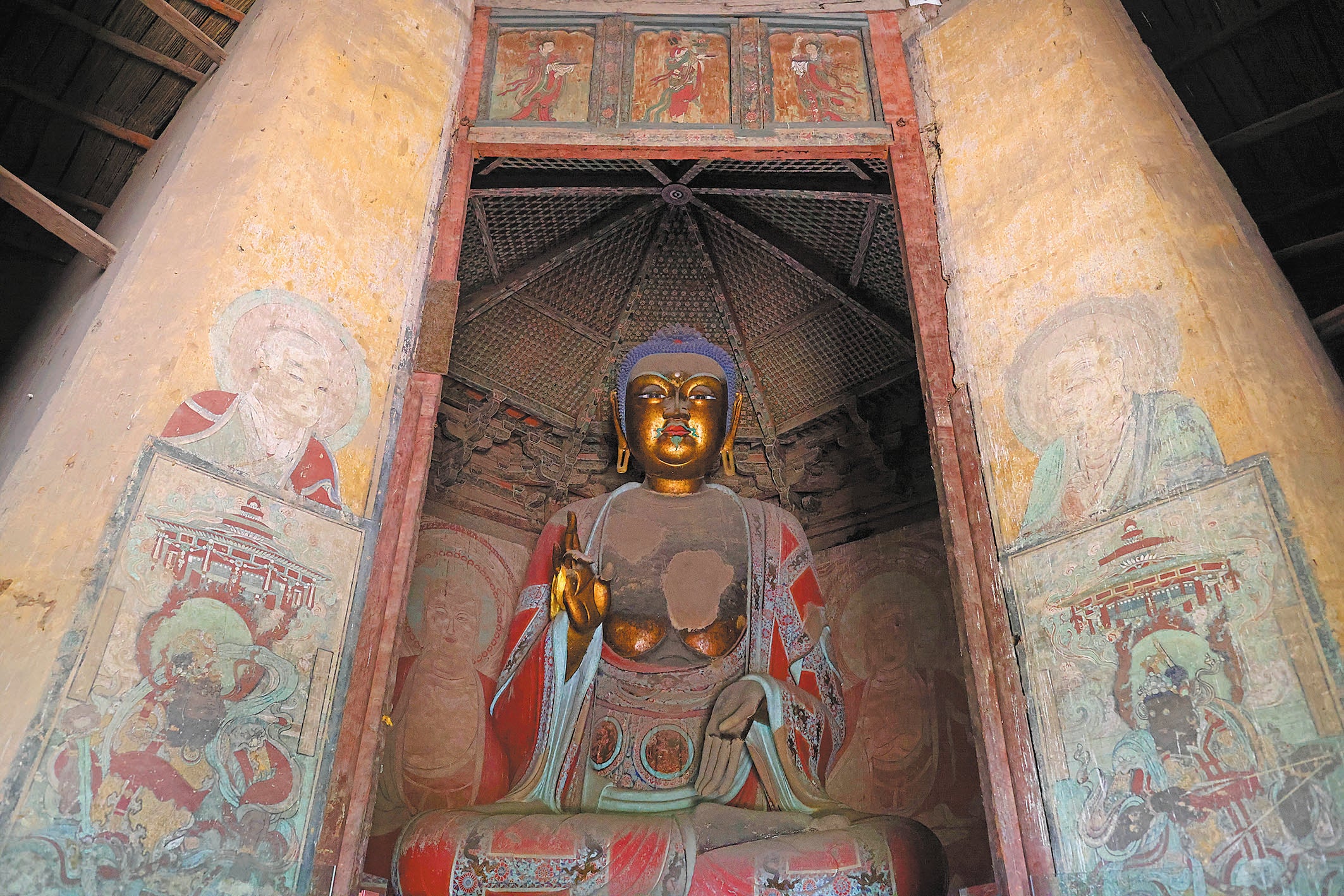AI used to help preserve China’s oldest wooden pagoda
THE ARTICLES ON THESE PAGES ARE PRODUCED BY CHINA DAILY, WHICH TAKES SOLE RESPONSIBILITY FOR THE CONTENTS

Artificial intelligence is being used to safeguard the country’s oldest and tallest wooden pagoda in North China’s Shanxi province that has withstood natural disasters and human calamities for 968 years.
The technology is being used to enhance the understanding of the 220-ft-tall Sakyamuni Pagoda, visualise its states over time and prepare for restoration work.
AI is not only being used to aid in preserving the pagoda in Yingxian county’s Fogong Temple, but also to enhance the visitor experience by revealing its significant architectural, historical and religious value.
Built in 1056 during the Liao Dynasty (916-1125), the pagoda, built entirely out of wood without the use of nails, has weathered earthquakes, wars and other challenges. Its intricate structure features innumerable mortises and tenons.
As tall as a 20-storey building, and with a base diameter of about 98ft, the pagoda is a remarkable architectural feat.
For its protection, visitors can only enter the ground floor and are prohibited from climbing to higher levels. AI technology, however, will allow them to experience the whole pagoda through 3D animation.
When renowned architect Liang Sicheng visited the pagoda for the first time in 1933, he was impressed by the pagoda’s intricate structure and ingenious design. He meticulously measured, surveyed and recorded the building, introducing its treasured relics to China and the world.

In Yingxian, the Sakyamuni Pagoda, also known as the Yingxian Wooden Pagoda, has been the most prominent landmark for generations, but over the years the pagoda has developed a slight lean.
Zhao Yushan, a 63-year-old carpenter in Yingxian, was so taken aback when he first saw the tower as a teenager that he has since dedicated most of his life to replicating it. He’s made numerous scale versions of the pagoda using only the traditional methods of construction, and is currently working on a 26-ft-tall replica.
The pagoda is an octagonal structure comprising nine storeys, with five visible from the outside and four concealed within. The Buddhist statues on each storey and the paintings adorning the inner walls of the ground floor are all creations from the Liao Dynasty.
“We local people believe the pagoda was built by Lu Ban (China’s legendary master carpenter of the Spring and Autumn Period (770-476 BC). The work is beyond manpower,” said a Yingxian resident surnamed Li.
He said that as the pagoda’s lean has increased over the past few years, the need for restoration has become more urgent.
In April, a virtual reality programme that replicates the pagoda was released by Chinese technology company Lenovo Group and Tsinghua University’s School of Architecture.
Wearing VR glasses, visitors can experience what it would be like to climb the pagoda and explore its interior.
Mao Shijie, vice-president of Lenovo Group and head of Lenovo Research Shanghai, said the project has utilised cutting-edge AIGC technology, enabling the swift digital reconstruction of the pagoda within 10 hours.
“It was a task that would have taken months using traditional methods,” he said.
Professor Liu Chang from Tsinghua University emphasised the importance of fully understanding the pagoda from various perspectives in guiding effective restoration.
He said unraveling the pagoda’s historical transformations and predicting its future state are crucial steps in the preservation process.
Liu hopes to utilise the collected data to analyse and deduce the appearance of the pagoda during different periods.
“It may even be possible to predict the future appearance of the pagoda by adjusting parameters and simulating how the wood may change after over 100 years,” he said.
The first step in protecting or even restoring the pagoda is to know it deeply, he said.
The pagoda is tilting, which means it is “sick”, he said, and to “cure” it, they have to first find a “hospital”.
Addressing the challenges faced in protecting the pagoda, Liu highlighted the need for meticulous preparation, a comprehensive understanding of the pagoda’s condition and the embrace of innovative technologies to drive conservation efforts forward.
